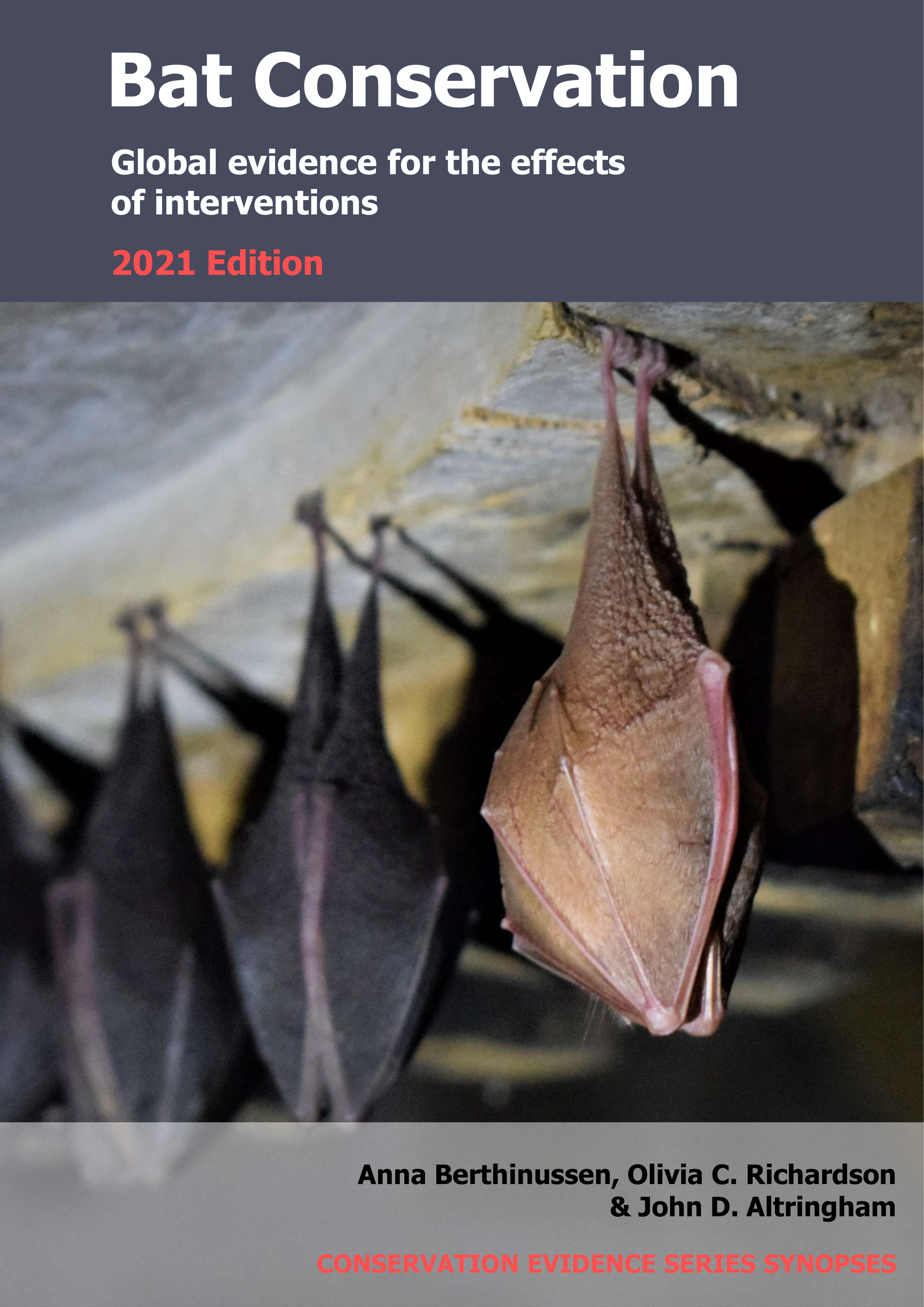Retain residual tree patches in logged areas
-
Overall effectiveness category Unknown effectiveness (limited evidence)
-
Number of studies: 3
View assessment score
Hide assessment score
How is the evidence assessed?
-
Effectiveness
30% -
Certainty
35% -
Harms
0%
Study locations
Supporting evidence from individual studies
A replicated, site comparison study in 2000 of six sites in logged forest in central British Columbia, Canada (Swystun et al 2001) found that the edges of residual tree patches had similar bat activity to clearcut forest edges. Overall bat activity along residual tree patch edges (49 total bat passes) did not differ significantly to that along clearcut forest edges (110 bat passes). Six residual tree patches (0.5–2 ha) were sampled in six clearcut blocks (105–180 ha, <5 years old) in logged forest (dominated by lodgepole pine Pinus contorta). At each of six sites, bat activity was recorded with bat detectors simultaneously along residual tree patch edges and clearcut edges for one night in July–August 2000.
Study and other actions testedA replicated, site comparison study in 2000 at nine sites in an experimental forest in Alberta Canada (Hogberg et al 2002) found that the edges of residual tree patches had higher activity of smaller bat species than the centre of open clearcut blocks, but the activity of larger bat species did not differ. More bat passes of smaller bat species (calls detected at 45 kHz) were recorded along the edges of residual tree patches (average 4 bat passes/hour) and forest edges (5 bat passes/hour) than in the centre of open clearcut blocks (2 bat passes/hour). A similar number of passes of larger bat species (calls detected at 25 kHz) were recorded along residual tree patch edges, forest edges and in the centre of clearcut blocks (data not reported). Residual tree patches were oval (60 x 90 m). At each of nine clearcut blocks (8–10 ha, 1–2 years old), three locations were sampled (forest edge, residual patch edge, centre of clearcut block). Each of three locations within nine clearcut blocks was sampled for 15 minutes 2–3 times in a randomized order during one night in June–July 2000.
Study and other actions testedA replicated, controlled study in 1998–2000 of 18 deciduous, coniferous and mixed forest sites in Alberta, Canada (Patriquin & Barclay 2003) found that residual tree patches had similar activity of two bat species and lower activity of one bat species compared to forest patches that had been cleared. The activity (bat passes/hour) of little brown bats Myotis lucifugus and northern long-eared bats Myotis septentrionalis was similar within residual tree patches and clearcut patches in all three types of forest (data reported as statistical model results). The activity of silver-haired bats Lasionycteris noctivagans was lower within residual tree patches than clearcut patches in all three types of forest. In winter 1998–1999, three patches of forest were left intact (average 974–1,210 stems/ha) and three were cleared in each of three forest types (deciduous, coniferous, mixed). Each of the 18 x 10 ha patches was surrounded by a buffer of intact forest (59–471 m wide). At each of 18 sites, bat activity was recorded with bat detectors at the centre and edge of each patch in June–July 1999 and June–August 2000 for a total of 33–42 nights/site.
Study and other actions tested
Where has this evidence come from?
List of journals searched by synopsis
All the journals searched for all synopses
This Action forms part of the Action Synopsis:
Bat Conservation
Bat Conservation - Published 2021
Update 2020





)_2023.JPG)














